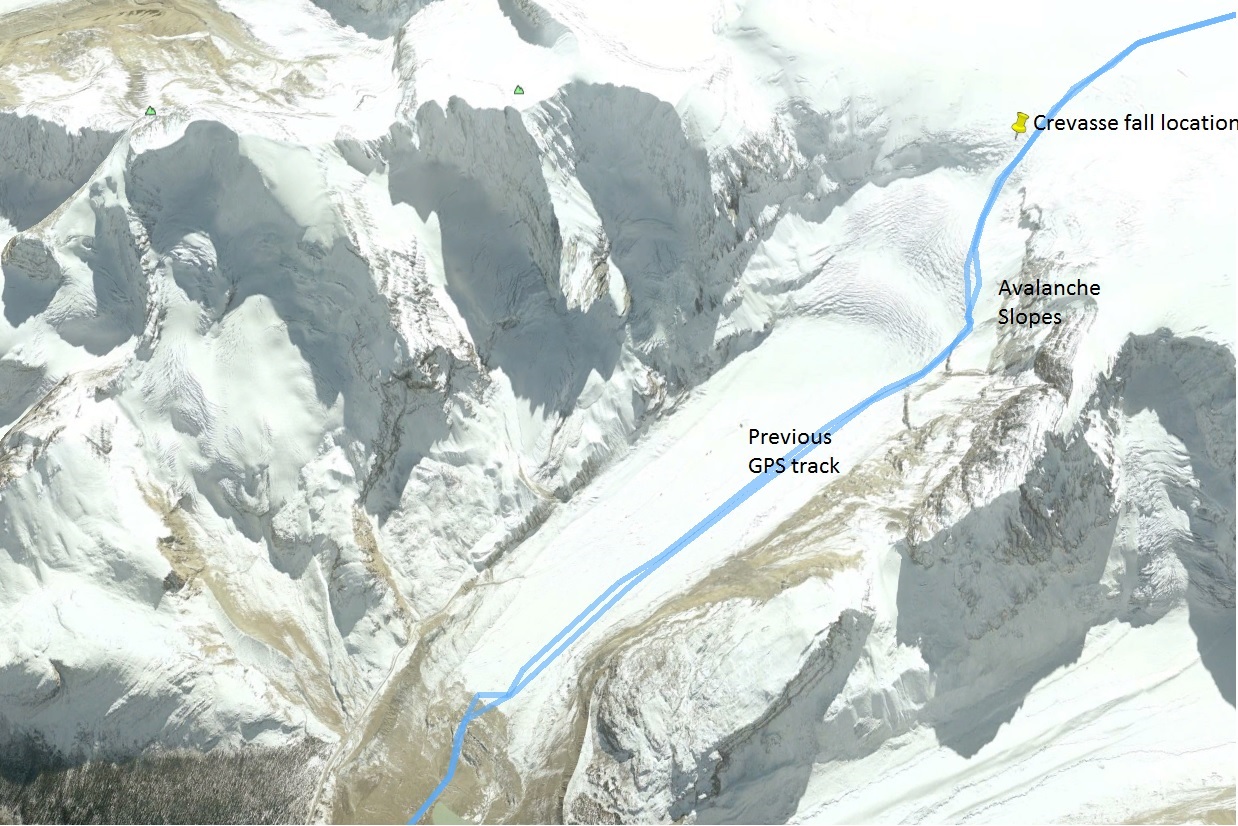Incident Description
On April 15th Parks Canada responded to a crevasse fall on the Athabasca Glacier. A party of two was exploring the Icefields on snowshoes. They had originally been planning on attempting to climb Mount Columbia, but decided to just go for a hike up the glacier because of poor weather conditions. As a result of the decision to limit their travel to the lower glacier they did not bring ropes or harnesses.
They made good progress to the end of the snowcoach road, and decided to proceed further when the weather was not as bad as they had expected. Following a GPS track they had downloaded from a travel website (from April 2015), they proceeded up the North side of the Athabasca Glacier. They made it to the top of the third step, when one of the party fell in to a crevasse.
The member still on the surface could not make voice contact with his partner, was getting a distance reading of 37 on his transceiver when in search mode, and so returned down the glacier to get help. On his return trip down the glacier he had to cross some avalanche debris that had covered their up track.
The member in the crevasse was unconscious for a time. When he regained consciousness he could not make voice contact with his partner. He changed into his boot crampons and was able to climb out of the crevasse. He walked back down the glacier, falling in another crevasse up to his armpits, and eventually made contact with a road maintenance vehicle working on the snowcoach road.
Analysis
This party had limited experience in mountain travel. They did not have adequate equipment for the terrain they were in. They were following a rough route description from an unknown source. They were not aware of the overhead hazard to the route they were following. They overestimated the strength of the snow bridges covering the crevasses - the Athabasca glacier has become increasingly broken and crevassed in recent years.
This individual is incredibly lucky to be alive, please use this as a reminder to:
-Wear harnesses and ropes when travelling on the Icefields - travelling in roped teams of three is recommended.
-Use a probe to assess the depth of the snowpack when travelling on a glacier.
-Thoroughly research your intended route, if visibility is poor it will be difficult to assess overhead hazards such as avalanche slopes, cornices and serac fall potential.
-Be aware that glaciers are constantly moving and conditions can change quickly. Do not assume that a previous route used to navigate crevasses is safe.
-Carry a two-way satellite messaging device, and carry it in a hard shelled case to avoid accidental activation.

